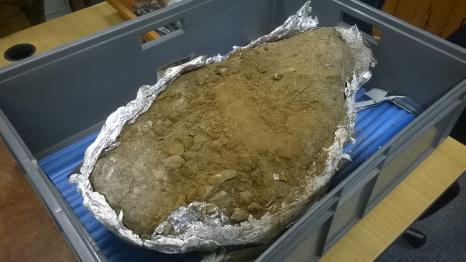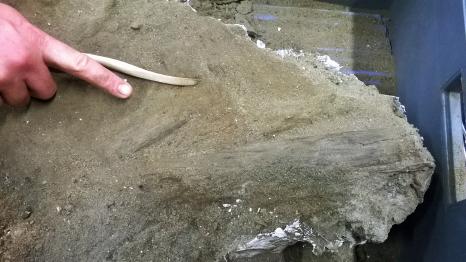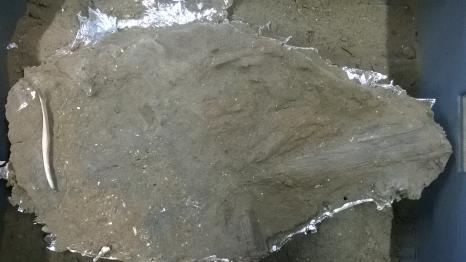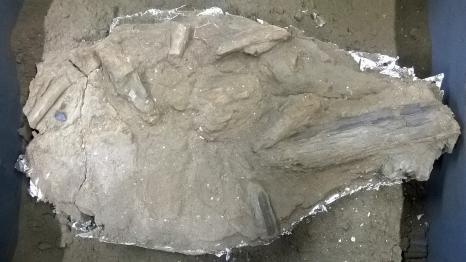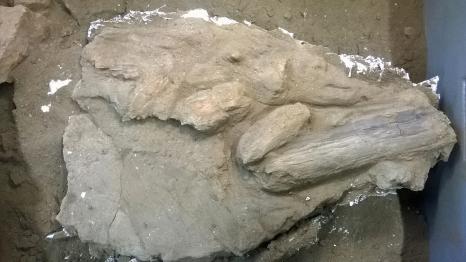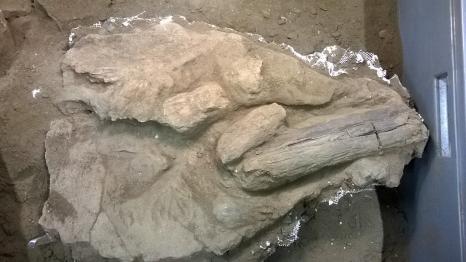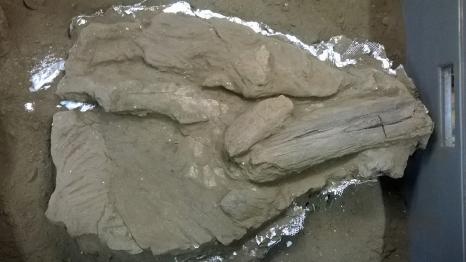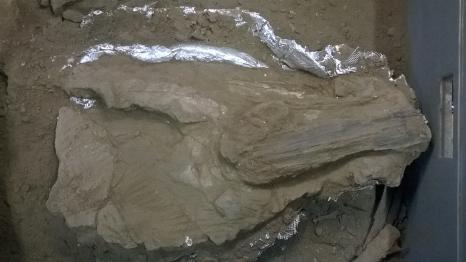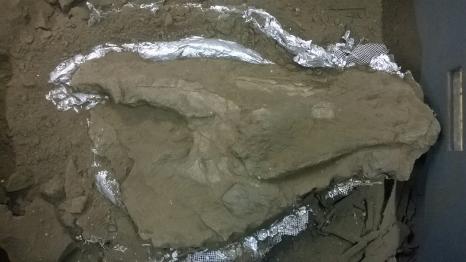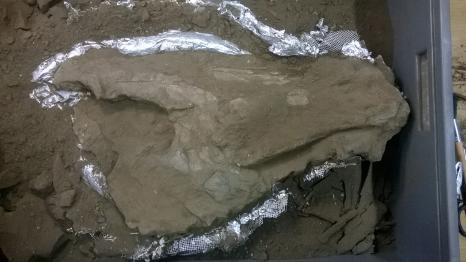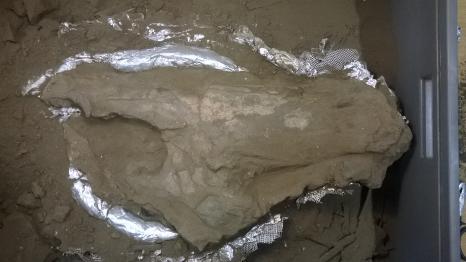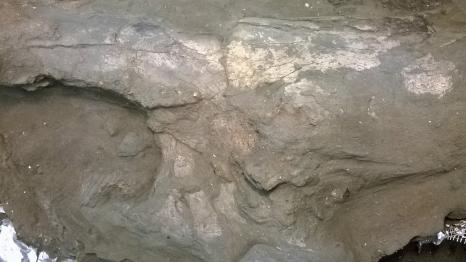Field Guide to the Deep History Coast
Recovering rhino remains from the West Runton Freshwater Bed
On 26 January 2015 a partial skull with two sets of tooth rows was discovered exposed by the tide in the West Runton Freshwater Bed, West Runton, Norfolk, England. The finder, Jonathan Stewart, made a preliminary investigation and partial excavation. Unfortunately it was late in the afternoon and darkness was threatening. Furthermore Jonathan was departing on vacation at 3am that night and he was unable to complete the dig, so he called me for assistance. After a quick examination in the gathering gloom we decided it had to wait until the morning when it could be done properly. So we covered it with sediment and sand and some large flints. I would attempt to recover the remains in daylight while Jon went to Tenerife.
First thing in the morning I made a quick journey to Norwich to find plaster of Paris and scrim, then went to the site, arriving at 11.15am. To my horror the tide had washed the specimen overnight and it was exposed. What's more, the tide was rising and threatened to wash over it again. So no time was wasted in exploring the remains. Work began immediately to photograph it and then cover the exposed teeth and bone with a capping of plaster and scrim, as some protection should the tide overwhelm it. Fortunately the tide stopped short of the cliff and so after plastering the top of the specimen, work continued to excavate around and beneath it. Once the full size of the specimen was known a second coat of plaster and scrim was added to envelop the top, sides and partly below the specimen. Once hardened, the block was undercut at both ends and through the middle and strong gaffer tape was threaded through beneath and back to meet at the top in order to bind the whole block together. Once securely bound the block could be gingerly lifted and rolled onto its back. With some difficulty it was loaded onto a plastic tray with cushioning beneath and wheeled along the beach on a folding sack barrow and into the back of the car at Woman Hythe. By this time it was dark again, around 5.30pm.
The remains are now wrapped up in the plaster jacket, awaiting preparation and conservation. We don't know precisely what is in there yet. All we have to go on are the quickly taken photographs below but it would appear that there are two tooth rows, one showing the outside of four upper molars and another seen set from the inside (interpretation courtesy of Professor Tony Stuart). There is also bone which may possibly be a rib, some eroded parts of the skull or jaws, one isolated partial molar damaged by erosion and another smaller piece of quite solid bone with tight curvature on its surfaces, suggesting it may be some other part of the skull (not visible in the photographs). It is quite a jumble of remains and cracked through from the weight of the 16 metres of strata above it (not to mention the weight of a glacier). So it will require great care to prepare and conserve. What other bones or teeth, if any, remain inside the block we shall not know until the remains have been expertly prepared. At the time of writing the conservation plan is still being considered but at least it is safely off the beach and can be dealt with at leisure.
Click on the images below to see full sized images. Use your back button to return to this page.
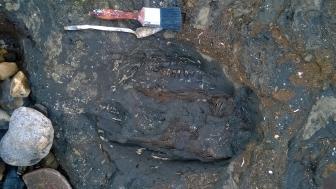 |
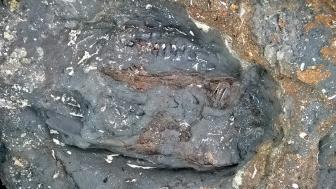 |
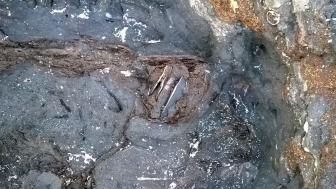 |
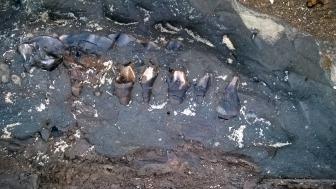 |
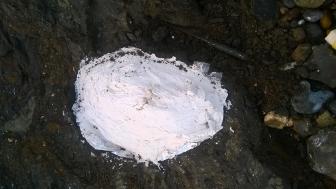 |
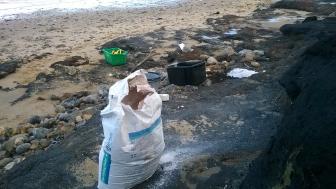 |
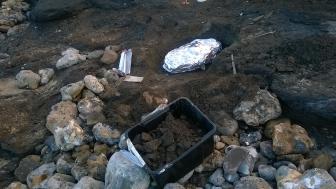 |
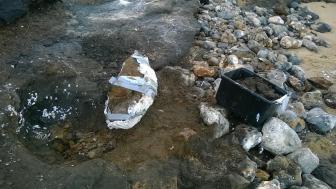 |
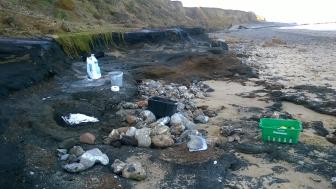 |
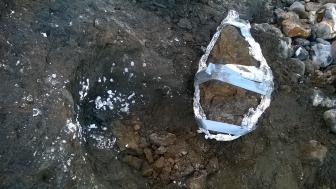 |
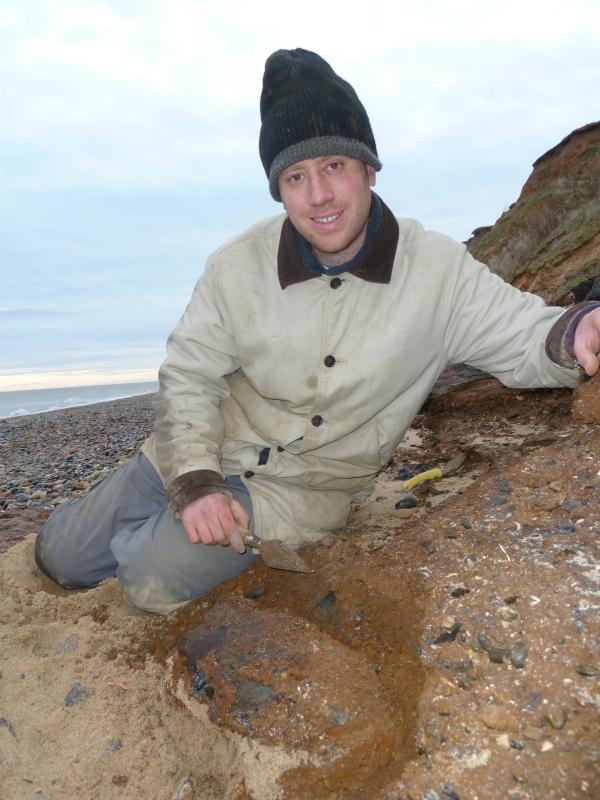
Collector Jonathan Stewart, 2012, during the excavation of a nasal bone (premaxilla) of a different rhino.
The first and only image taken of the rhino remains on the day of its discovery, taken in the gloom of a winter afternoon. It's not spectacular but it caught Jonathan's eye. PS the date stamp in the image is incorrect. It was 26.1.2015.
Development
The remains were taken to the headquarters of the Norfolk Museums Service at The Shirehall in Norwich in October 2015. There they would be developed to reveal what was inside. The work by Jonathan Stewart under the supervision of curator David Waterhouse and conservator Jonathan Clark has proceeded slowly but very carefully and proved that there was indeed a fair amount of a skull inside, including part of the left eye socket and nasal septum, partial cranium and toothrow(s). At the time of writing (January 2017) the development has been confined to one side only, the underside (the block was inverted as part of the recovery process). Work will continue on the other side once the manoeuvre to turn it over has been completed.
Photos taken 22 October 2015
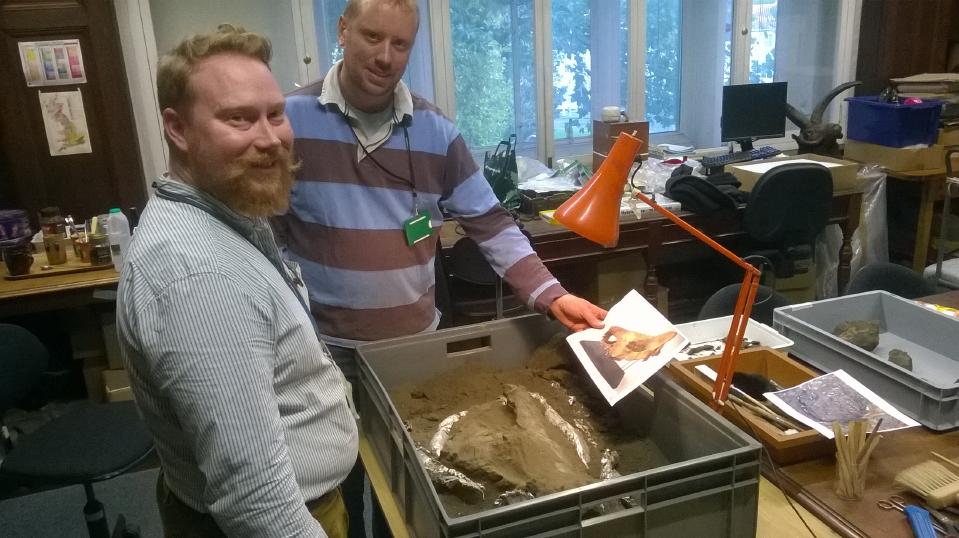 Dr David Waterhouse (left) and Jonathan Stewart |
What type of rhino is this?
Scientific investigators and amateur collectors have been visiting the West Runton Freshwater Bed since the 19th century. A number of remains of rhinos have been discovered from the bed over the years. Some are in the collections of the Norfolk Museums Service (Cromer Museum; Norwich Castle Museum and Art Gallery). This would once have been called the "Etruscan rhinoceros" Rhinoceros etruscus but that name is now applied to the ancestor of this species. Our specimen is still awaiting preparation that will reveal its true identity but it is likely to belong to the descendent species of the Etruscan rhino called Stephanorhinus hundsheimensis, whose type specimen came from Hundsheim, not too far from the River Danube, east of Vienna, in Austria (in this photo, courtesy of Professor Tony Stuart, the front part of the skull is missing). They ranged across Europe and were adapted more for browsing rather than for grazing.
Mounted skeleton of Stephanorhinus hundsheimensis.
Reporting finds
Please report all finds from the Cromer Forest-bed to the Norfolk Museums Service, who are maintaining a database of fossils finds in order to better understand the nature of this remarkable coastline.
Visit this website to discover more
Media attention
The find has attracted considerable media attention:
Daily Mail
Eastern Daily Press (front page!)
Mustard TV
BBC website
Mirror
Guardian
This one...
I also filmed a piece with Mike Liggins for Look East, BBC but I can't find it online at the moment.
Rhinoceros finds are not uncommon. Two years after this find, on 14 January 2017 another storm surge caused erosion of the WRFB and more fossil remains were discovered by amateur collectors. I was able to collect a rhino atlas (first cervical vertebra), which joins on to the skull (but not the one described above). Here are the pictures and description of that find.
Compiled by Martin Warren. Last edited 13.2.2017
